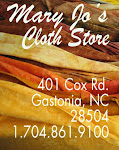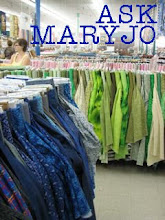
Fabric is always so fun. The designs and colors are cyclical and what was in fashion always seems to re-invent itself and show up decades later. We are always receiving news of what is new, trendy and available in the fabric world. So let us talk about that for a moment. Colors for the season, this year are bright and turned up. The popular color palette for 2010 are Turquoise, Violet, Orange, Tomato Red and of course, Taupe and a shaded pale Green, just to name a few.

The other trend is what is old, historic and somewhat romantic, is yes, you guessed, new again! The folks who make the fabric are turning to designers to create collections that are not only brightly colored but featuure the things we love. Themes are as varied as Botanicals, Circus, Chickens, Animals, Florals and historically correct fabric from the Civil war era. What is being created and manufactured are truly inspired and created with you in mind!
We recently received a newsletter from one of our Fabric manufacturers. The news was interesting. They are creating collections based on history. These collections include the very romantic, "Hankie Club" collection. Beautiful colors with lots of floral, large and smallish print. This fabric collection would lend itself to a Bedroom make-over, a lovely summer dress or some really fantastic lining for a jacket, purse or tote bag and of course quilting. This is what Windham Textiles has to say about this particular collection.
"One of the true fashion innovations of the sixteenth century was the introduction of the handkerchief as a fashion accessory. Handkerchiefs themselves were not new; people had been carrying a small cloth for blowing their nose for years. These soiled items, however, were kept tucked away out of sight, causing uncertainty as to when the first handkerchief was actually invented.
 In the Middle Ages ladies presented men with their handkerchiefs to show their favor. Decorated with luxury embroidery, silver and golden fibers and fringes, the handkerchiefs were used to perform church and coronation ceremonies. However, hankies appeared in vogue during the Renaissance when they became an essential part of any upscale wardrobe.The same women who dressed in exquisite silk gowns had their tailors add lace or a scalloped edge to a fine linen cloth and elevated the handkerchief to the status of fashion accessory. A fine lacy handkerchief, or hanky, was not tucked away in a pocket but held in the hand or draped coyly across the arm.
In the Middle Ages ladies presented men with their handkerchiefs to show their favor. Decorated with luxury embroidery, silver and golden fibers and fringes, the handkerchiefs were used to perform church and coronation ceremonies. However, hankies appeared in vogue during the Renaissance when they became an essential part of any upscale wardrobe.The same women who dressed in exquisite silk gowns had their tailors add lace or a scalloped edge to a fine linen cloth and elevated the handkerchief to the status of fashion accessory. A fine lacy handkerchief, or hanky, was not tucked away in a pocket but held in the hand or draped coyly across the arm.Handkerchiefs have remained fashionable ever since. It is rumored in fashion history that Marie Antoinette (1755-1793) was frustrated that handkerchiefs were offered in so many shapes; round, oval, rectangular, etc. Her husband, King Louis XVI (1754-1793), made it a law that all handkerchiefs must be square, and have remained so ever since. An old Irish proverb advised “Always carry two handkerchiefs, one for show and one for blow.”
 Skip in time to America when up until the early part of the 20th century people worldwide either wiped their nose on their sleeve or on their handkerchief. During this period inexpensive decoratively printed squares of cotton and linen were carried in handbags, given as gifts, and pulled out when tears were about to be shed, or a sneeze was on its way. They dabbed at lipstick, were sprinkled with perfume, and were even dropped in strategic locations to be picked up by that certain person.
Skip in time to America when up until the early part of the 20th century people worldwide either wiped their nose on their sleeve or on their handkerchief. During this period inexpensive decoratively printed squares of cotton and linen were carried in handbags, given as gifts, and pulled out when tears were about to be shed, or a sneeze was on its way. They dabbed at lipstick, were sprinkled with perfume, and were even dropped in strategic locations to be picked up by that certain person.The history of handkerchief bazaars, or hankie clubs, is an interesting one which made headlines on more than one occasion. During the first two decades of the twentieth century, thousands of requests for handkerchiefs were printed on penny postage postcards and mailed to women across North America. One of the most famous of these resulted in the following New York Times Headline:
Mrs. Roosevelt Stops Gifts; Declines to Send Handkerchief to the Women of Minnesota.
The Minnesota Territorial Pioneers Association could thank the women of Texas for Mrs. Roosevelt’s decision to abolish the White House Handkerchief Bureau after a group of Austin women labeled her donation to their handkerchief bazaar, “a cheap cotton rag.”
 Finally some historians blame Little Lulu for the decline of the handkerchief. Used as an advertising icon in the 1940's, the popular cartoon character touted the benefits of using disposable paper tissues, and sales of Kleenex soared. But cloth "hankies" had been losing ground to paper since 1924, when Kleenex tissues were first marketed as cold-cream removers. Almost immediately consumers began using the disposables, instead, to blow their noses."
Finally some historians blame Little Lulu for the decline of the handkerchief. Used as an advertising icon in the 1940's, the popular cartoon character touted the benefits of using disposable paper tissues, and sales of Kleenex soared. But cloth "hankies" had been losing ground to paper since 1924, when Kleenex tissues were first marketed as cold-cream removers. Almost immediately consumers began using the disposables, instead, to blow their noses."This collection was created by Whistler Studios.
Collections like these will are being stocked almost every day. Log onto the website or stop into the store for the latest in colors and patterns.
Sew, friends please remember to take a moment and send us your newest projects, we always love to hear all about you and your creations!






2 comments:
I love seeing those hankies, they are so pretty and feminine.
Love hankies....and include them with my handbags because they make a "tomboyish" handbag look young and flirty....smiles.
Post a Comment